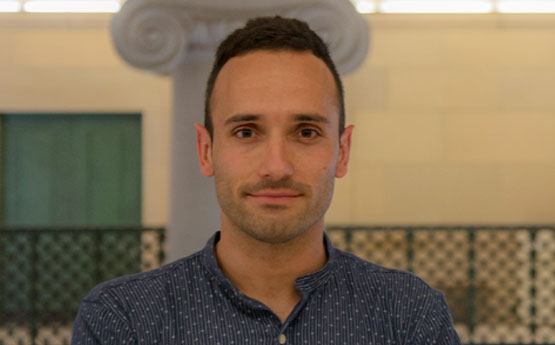What is your field of research?
I am a lecturer at Swansea University’s Chemistry Department and a Research Affiliate at the Massachusetts Institute of Technology (MIT). I head up the Laboratory for Bioinspired Biobased Nanomaterials at Swansea University.
How did you become interested in the field?
I have always been fascinated by nature and the materials and technological solutions that it provides. Thus, I got involved in the study of bioinspired materials, in other words, materials that mimic nature.
The ability of nature to create multifunctional materials with extraordinary performance is fascinating. I have studied the key features of several natural materials and my focus is on designing materials that mimic this performance, while addressing global challenges to sustainable development.
How did you come to work at Swansea University?
I spent six years at MIT, looking at multiscale modelling of bioinspired materials as well as developing new materials from biomass waste. I worked on projects with NASA, NSF and the Department of Defense. Some of the materials we studied included mussel threads for developing mussel-inspired super adhesives, spider and silkworm silk to understand its source of strength and flexibility, and to develop bioinspired silk membranes with strong, flexible and light-weight properties, seashell nacre (otherwise known as mother of pearl) to design graphene-based composites with superior mechanical performance, cuttlefish skin to understand the structural and pigmentary colour that leads to camouflage, and the jaws of a sea worm (Nereis Virens) to design environment-responsive bio-inspired materials for soft robotics. We also produced electrodes for redox flow batteries out of shrimp shells.
I wanted to return to Europe and to start my own research lab, and I heard about an open position at Swansea University’s Chemistry Department. I liked the idea of a newly-opened department, in which I could contribute to build something that matters, beyond my individual career. Meeting some of the people at the Chemistry Department (Professor Juan Mareque-Rivas, Professor Owen Guy, Dr Mariolino Carta, Dr Christian Klinke) sealed my decision.
What do you hope to achieve with your research?
To design and develop more sustainable materials for large-scale applications that meet global needs. This could be related to energy harvesting and storage, infrastructure, or agriculture. To this end, I use computational chemistry, multiscale modelling, and more recently artificial intelligence. The ultimate goal is to have a predictive modelling and simulation framework that speeds up materials discovery and eventually guides the production of designer materials.
What practical applications could your research have?
The materials we are working with have the potential for many real-world applications. Ideally, we can design the material for any possible application that we can think of, although in same cases achieving the desired performance using only bio-based materials is extremely challenging. The core idea is to take advantage of biomass sources, and waste reutilisation, for the production of materials needed in our society. Following my research at MIT, this has primarily been applications related to energy storage, e.g. redox flow batteries, which offer economic and flexible energy storage; and infrastructure, using for example, bio-based asphalt – an asphalt alternative made from non-petroleum based renewable resources – which can be used in road construction. I am also especially interested in precision agriculture, which is a new direction I am taking for my research and which seeks to use new technologies to increase crop yields without the need for herbicides and insecticides.
At the Laboratory for Bioinspired Biobased Nanomaterials at Swansea, we combine computational chemistry and machine learning (ML) algorithms, to accelerate the development of these nature-inspired and biobased materials. Some of the materials we are working with include nanocellulose, the properties of which make it a useful material for reinforcing plastics; biocrude oils, carbon nanoparticles, and graphene. We work with leading research groups and industry partners locally, nationally, and worldwide, in the US, Taiwan, Chile, Nigeria, Belgium, Italy, and Spain.
Why is it so important to develop bio-based materials?
We live on a planet with limited resources and an increasing population. It imposes countless challenges related to food security, climate change, infrastructure, or water scarcity, to name but a few. We also produce large amounts of waste of several types, which are mostly underutilised. Using waste to produce biobased materials and technological solutions is a first step towards a circular economy that provides our material needs in a more sustainable way - we need to design materials for reuse as well as performance.

